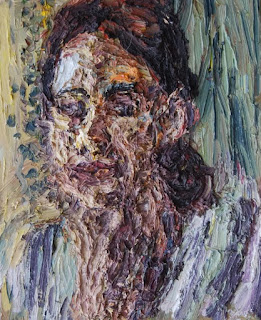O’Connor, Flannery. Wise Blood. Farrar, Straus, and Giraux, 2007. Hazel Motes is a lonely nihilist preaching a church without Christ, yet somehow though bizarre and violent means, the authenticity of his via negativa approach to God is validated by a subtly implied baptism. If Haze can be saved, dare we hope for all of us?
Greene, Graham. The End of the Affair. Penguin, 2004. This journal of hate is another via negativa approach to God, one born of an illicit sexual affair and an apparent act of God that the protagonist would have done without. The end of the story is not happy, but the reader is left to question what change has occurred and what might happen next.
Malick, Terrence, director. The Tree of Life. ICON, 2011. From a director who had wanted to film The Moviegoer prior to Katrina, this film is also a semi-autobiographical reflection on the meaning of life and the dualistic struggle between grace and nature in light of a life defining loss. This also has an Augustinian feel to it, not only with its confessional narrative but with its need to incorporate the history of the universe since creation into the narrator’s sense of self and belonging.
Johnson, Mark Steven, director. Simon Birch. 1998. This loose adaptation of A Prayer for Owen Meany deals with providence, friendship, grief, and the makings of a hero (perhaps a saint) from a very unlikely and severely flawed young boy who views himself as an instrument of God.
Hinton, S. E. The Outsiders. Speak, 2006. Ponyboy Curtis plays the beloved evangelist to Christ figure Johnny Cade who is marginalized by society, wrongfully accused, and sacrifices himself to save the lives of children. The story deals with gang violence, family trials, and the quest for the good and for permanence.
Weir, Peter, director. The Truman Show. 1998. This film is a precursor to the reality television age. It deals with exploitation of people, deception, why we feel the need to be entertained, why we choose to live vicariously through television personas, and enlightenment. An analogy to Plato’s cave can be made, as well as a discussion of whether it is better to live with the hard truth or blissful ignorance. The film also has another implied baptism scene followed by a kind of stairway to heaven.
Darabont, Frank, director. The Green Mile. 1999. Darabont’s adaptation of a Stephen King thriller deals with man’s inhumanity to man and the death penalty though the story of John Coffey, an innocent black man with healing gifts awaiting his execution. The story is told from the point of view of a prison guard named Paul. The allegory is obvious once it’s pointed out.
Shakespeare, William. Romeo and Juliet. Ignatius Press, 2011. Considering the scholarship devoted to understanding Shakespeare’s Catholic family heritage and the religious bloodshed of the time, the tragedy takes on new light. Catholics? Anglicans? “A rose by any other name would smell as sweet,” but are divisions between Christians a type of spiritual suicide for the church’s mission? We can also facilitate a discussion about responsibility and maturity in love.
Rowling, J.K. Harry Potter and the Deathly Hallows. Arthur A. Levine Books, 2009. The Harry
Potter series is full of Christian allegory, but let’s leave on one final confrontation between good and
evil involving the hero’s death and resurrection, all to save his friends.
Wolfe, Suzanne. The Confessions of X. Thomas Nelson, 2016. This piece of historical fiction tells the
scandalous story of St. Augustine through the eyes of the unnamed concubine he abandoned.
Unkrich, Lee and Adrian Molina, directors. Coco, 2017. A child's misadventure on the Day of the Dead serves as a reminder of the importance of memory, mercy, and family.
Tolkien, J.R.R. The Lord of the Rings. Houghton Mifflin Harxourt, 2012. Tolkien hated
allegories right? Gandalf/Frodo/Aragorn =Prophet/Priest/King in this fantasy apocalypse.
Undset, Sigrid. Kristin Lavransdatter. Penguin Classics, 2005. A young woman's rash decisions
cause her to suffer the consequences that lead to her redemption.
Scorsese, Martin, director. Silence, 2016. How can a story about Jesuits who forsake their vows prompt a viewer to be more Christlike? Somehow this one does.
Lee, Spike, director. Malcolm X, 1992. Worthy for the violence suffered that provoked by any means
necessary as much as the process of conversion that brought him to peace with others.
Taylor, Daniel. Death Comes for the Deconstructionist. A detective story that moonlights as a satire
and hits the jackpot with its philosophical and theological weight.
Stillman, Whit, director. Metroplitan, 1990. A look at the New York debutante scene through the
lens of a modern day Jane Austen still holding virtue with the highest regard.
Morrison, Toni. Beloved. Vintage, 2004. The Catholic imagination of Toni Morrison is seldom commented on, but the degrees of concupiscence attached to social sin are on display.
Kass, Leon, ed. Being Human: Core Readings in the Humanities. W. W. Norton & Co., 2004.
This may be the perfect textbook for an AP English or honors interdisciplinary capstone class
for high school seniors. Small selections from all genres and disciplines focused on the
meaning of our humanity through all the seasons of our life.







